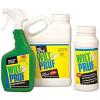Apple Storage

How to Store Apples to Retain that Fresh-Picked Flavor
NOTHING compares to the crunch and flavor of a just-picked apple. Unfortunately, left on a countertop or in a fruit bowl, apples will begin to lose that fresh-from-the-tree taste. The good news is that by storing them properly, you can enjoy crisp, flavorful apples for months.
Choose good keepers
The best keepers are the more tart and thick-skinned varieties, such as McIntosh, Fuji, and Ida Red. The apple varieties harvested late in the season tend to be good keepers. If you pick your own, ask the orchardist for a recommendation. Honeycrisp, a more modern variety, is a good keeper, too. The sweeter, thinner-skinned types — such as Delicious or Gala — can still be stored, but they don't last as long, so use them first.
Harvest with care
When picking apples, handle them carefully, like eggs. They bruise and nick easily. Save the perfect apples for long-term storage, but use the damaged ones for eating fresh or cooking. The saying, "One bad apple spoils the whole bunch" is true — even one rotting apple can adversely affect others nearby.
Keep them cool
The ideal storage temperature is 30 to 35 degrees F. with 90 to 95 percent relative humidity. If you don't have a lot of apples, the refrigerator is a good option. Place them in the crisper drawer in a plastic bag with holes in it or cover the apples with a damp paper towel. Don't store other vegetables in the same drawer, because apples give off ethylene gas, which can speed the decay of neighboring produce.
If you have larger quantities, look for a cool, dark (or dim) place that's relatively humid, such as a cellar or garage. It's best if the temperature stays close to freezing – but not below! Wrap each apple — preferably with the stem on — in a piece of newspaper or kraft paper. The paper keeps the apples separate. Place the wrapped apples in a crate or bin, ideally in a single layer.
Check the apples periodically and remove any that are spoiling. Use the large ones first because they tend to get soft before the smaller ones. Apples continue to ripen in storage, so place each variety on its own tray (or in separate crates) because they ripen at different rates.
September 19, 2017
|
View: 2417







